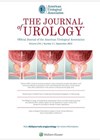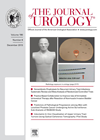
Journal Reviews
Sexuality and erectile function in young men with spina bifida
As our patients with spina bifida (SB) continue to live longer into adulthood we recognise that many of these men experience challenges with sexual health, related to their underlying neurological function. Few studies on male sexual health in this population...
Long-term risks of augmenting the bladder in spina bifida patients
Bladder augmentation is utilised to treat children with neuropathic bladders secondary to spina bifida that results in hostile urodynamics, renal deterioration and / or urinary incontinence. Whilst it is associated with an improved quality of life and low mortality, it...
Prenatal spina bifida repair – does it have urological benefits in the longer term?
At present, I have one patient under my care who underwent prenatal closure of his spina bifida defect. Only with time, will we be able to determine whether this intervention has been of benefit for him from a urological standpoint....
Optimisation of childhood spina bifida management – a prospective trial
Routh et al. describe a prospective trial which aims to determine the optimal urological management for children with spina bifida. The primary aim of neuropathic bladder management is to provide the patient with the best long-term quality of life with...
Antimuscarinics and behaviour in patients with spinal dysraphism
Since the 1980s patients with spinal dysraphism have had aggressive bladder management with clean intermittent catheterisation and anticholinergic therapy from early on in life. This strategy aims at improving lower and therefore upper urinary tract function thus decreasing the risk...








